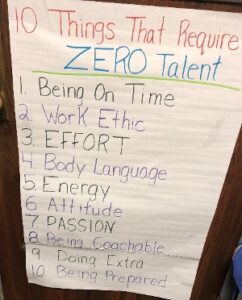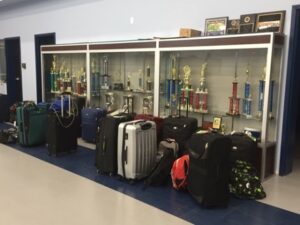Supporting Healthy Peer Relationships: Lessons from Positive Outlier Schools
By Aaron Leo, Jessie Tobin, & Kristen C. Wilcox
 Peer relationships are crucial influences in the lives of adolescents. While some studies have identified the ways in which negative peer interactions can harm young people’s self-esteem and academic performance, healthy peer relationships can help mitigate the developmental challenges many adolescents face by supporting healthy self-identities. Healthy peer relationships can also positively impact academic engagement and a young person’s identification with the school and wider community.
Peer relationships are crucial influences in the lives of adolescents. While some studies have identified the ways in which negative peer interactions can harm young people’s self-esteem and academic performance, healthy peer relationships can help mitigate the developmental challenges many adolescents face by supporting healthy self-identities. Healthy peer relationships can also positively impact academic engagement and a young person’s identification with the school and wider community.
As youth begin to spend less time with their families, peer relationships take on special importance. Schools are important sites where peer relationships take shape and develop, and educators are important figures who can guide peer interactions and shape the school culture and climate in which peers interact.
In this blog, we discuss the ways in which youth from our Phase II College and Career Readiness Student Study described their relationships with peers and explore the strategies that educators at these positive outlier schools used to help foster positive peer relationships.
A Caring School Culture and Inclusive Climate
In Phase I of our NYKids College and Career Readiness Study, we found that educators at positive outlier schools strove to create a welcoming and supportive school climate characterized by cooperation and collegiality. Our follow-up study revealed that students from these schools echoed these findings and related them in part to what they characterized as largely positive and harmonious relationships with their peers.
In both Malverne and Crown Point, for instance, students described their schools as “close knit.” “Like almost knows almost everyone,” said one student from Crown Point. Another student from Malverne responded similarly, “I mean, once you know everyone here it’s like they’re kind of just your family.”
A senior at Malverne explained in a focus group how the school offered a place for students from different backgrounds to come together and learn with each other: “I think when we do all come to school and we all interact with each other we are able to break through [any cultural barriers].”
Students in this study felt that the caring climate manifested itself in a lack of hierarchy among peer groups and relative absence of bullying. One Crown Point junior summed it up: “Everybody [at Crown Point] is in one big peer group.” Another student explained her experience in Malverne, where in her assessment, peer hierarchies are generally absent:
“We don’t have this popular hierarchy, like social hierarchy here. There aren’t cliques; you just hang out with this group of people, and sometimes you hang out with this person, and maybe you’re friends and maybe you’re not.”
Another Crown Point senior reiterated a similar message about her school:
“Like in big schools there is bullying, but in our school, a lot of us are just friends with everyone. Yeah, I would describe our school as friendly. And we’re welcoming to new people in our school.”
Encouraging Peer Leadership and Modeling
Peer relationships were strengthened by educators who regularly encouraged their students to take leadership positions as mentors— engaging in such activities as tutoring their peers or modeling good behavior for younger students.

In addition, students at both schools explained that educators encouraged them to work together frequently on projects, form study groups, and participate in extracurriculars and clubs.
One student from Crown Point explained the expectation held by educators at his school to “start a chain reaction to have good behavior everywhere.” Similarly, another student from Malverne reported taking on mentoring roles for younger kids as they progress through high school is the norm. In particular, she explained how becoming section leader in Band provided her with a valuable opportunity to mentor her younger peers:
“I always looked up to my section leaders from like 9th to 11th grade. And they always seemed so much older than me and they had so much experience. And when I got to 12th grade I was like, ‘Oh that’s my role now.’ ”
Like other students from Crown Point, one senior interpreted her involvement in such organizations as the National Honor Society as coming with the expectation that she and her National Honor Society member peers act as role models for others:
“They [adults] use the [student] leaders to help show the younger students or students who haven’t experienced certain things how to act in a way. But they know that they can trust us to be that role model.”

Extracurriculars Create Opportunities for Connections across Groups
Other aspects of positive outlier schools which helped foster healthy peer relationships and an inclusive school climate were the copious extracurricular activities, clubs, and sports available to students. These extracurriculars provided opportunities for students to interact with peers from different social groups and backgrounds.
During a Malverne focus group, for instance, One student explained how extracurricular activities helped create unity among their peers and allowed them to build relationships with people they might not have otherwise had a chance to get to know:
“I’m a part of the Robotics Club at our school, and we have students at the top of their class and we have students at the bottom of their class. It almost evens it out in a way. When students join Robotics, most of them don’t know anything about it. And they come there and they learn. And everybody learns the same thing and everybody ends up learning at the same rate. So in a way, it kind of humanizes everybody. You don’t see the kid at the top of the class as that really smart kid that’s better than everyone else. You see him as the kid that doesn’t know how to tighten a screw. It almost gives us all a new perspective on each other. It goes back to the whole interconnected part of us where we can all come together.”
Students at Crown Point described how clubs and activities helped strengthen their relationships with classmates and make connections across peer groups. One such activity was the annual trip that students in the “Future Community and Career Leaders of America Club” made to see a Broadway show in New York City. Other students described how after school clubs and activities they participated in facilitated cooperation and community engagement. One student, for instance, explained how she worked with classmates and educators to organize an event to honor veterans:
“We got together with our history teacher… We set up a whole day and they [the veterans] came. It was an all-day assembly. We watched a movie about just what ‘’Honor Flight” [a veteran’s event held yearly in Washington D.C.] is and we had an interview with other veterans that were not here. And then they did questions and answers with 6th grade through 12th grade. We had that all organized. We had questions that were already printed out for us to ask them.”
Summing up, some of the key findings from our research on peer relationships are:
- Providing leadership and mentoring opportunities for students to foster a positive school climate and culture.
- Copious extracurricular activities give students a chance to work with peers that they might otherwise not meet in their classes.
- Encouraging students to work together on projects and in informal study groups can enhance connections between peers.
- Collegial and collaborative relationships between staff members can serve as an important model for students to emulate and learn from.
To learn more about NYKids’ latest research visit our research results page for our College and Career Readiness Study reports and sign up for our bimonthly newsletter. Thank you for your interest in NYKids and be sure to follow us on Twitter, Facebook, Instagram or by email at nykids@albany.edu.
